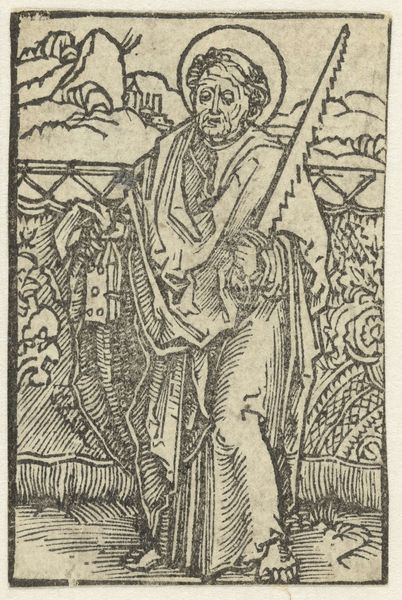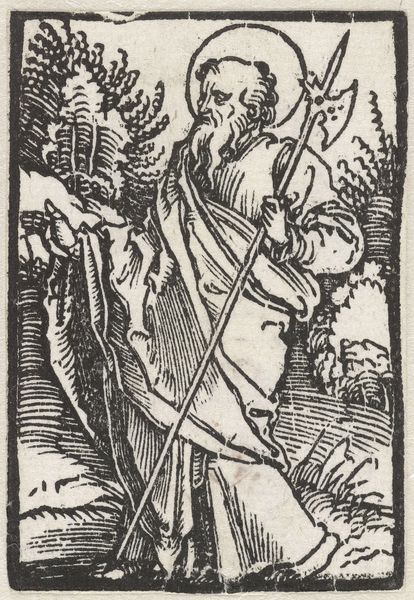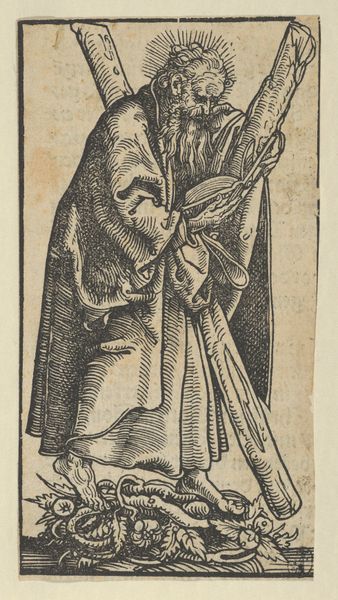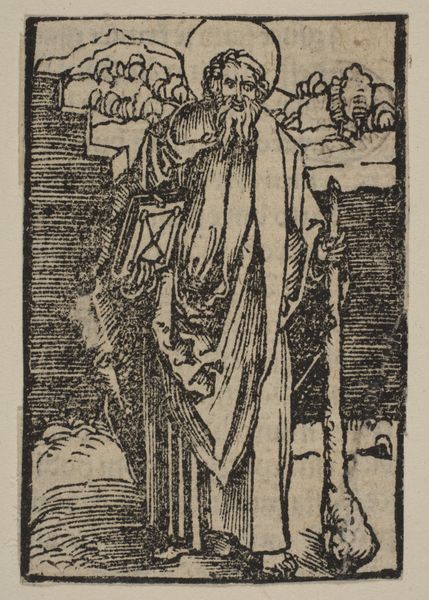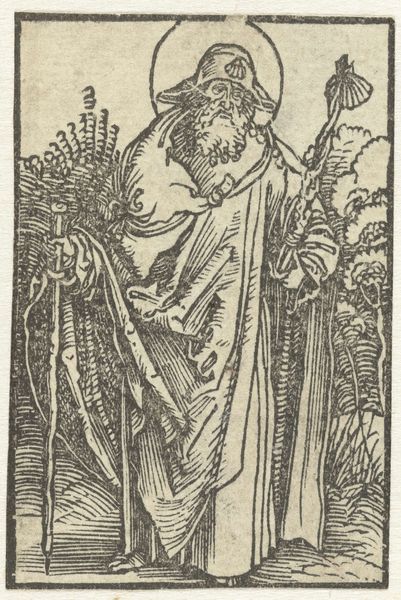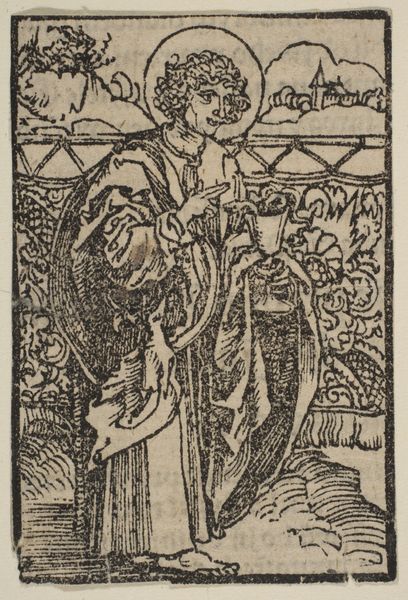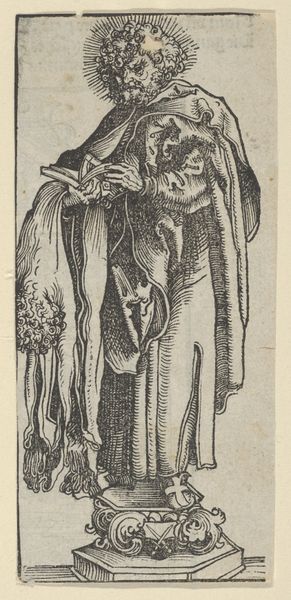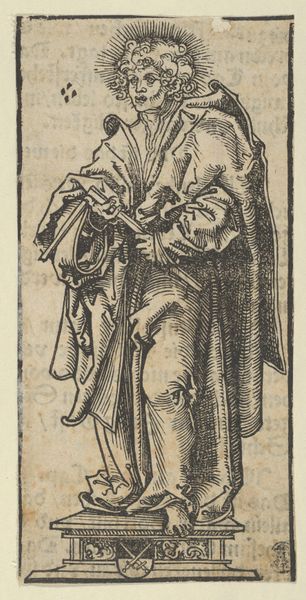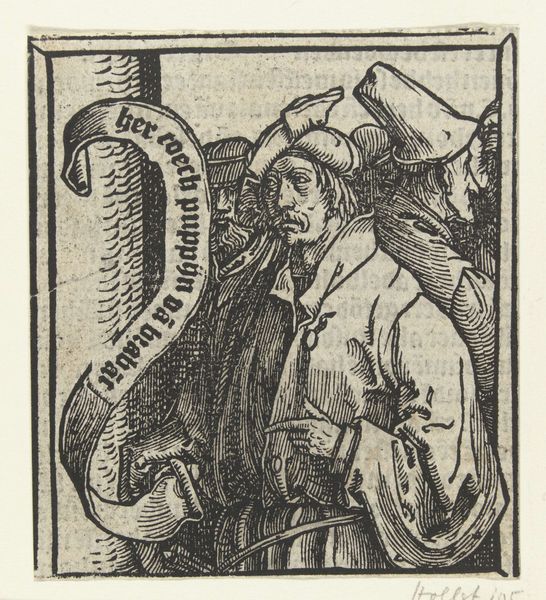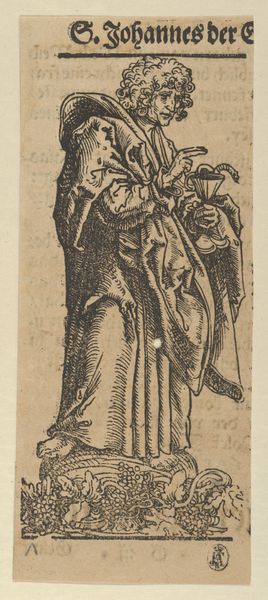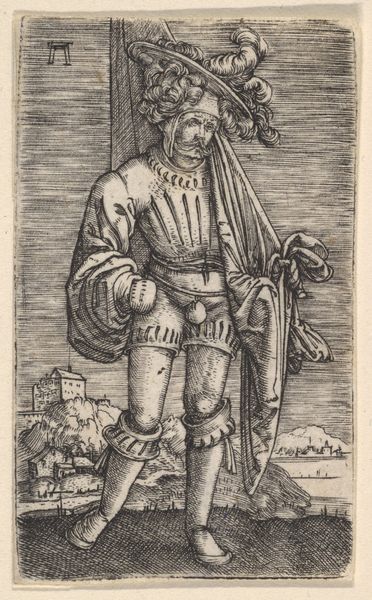
print, woodcut
# print
#
figuration
#
woodcut
#
line
#
history-painting
#
northern-renaissance
Dimensions: height 61 mm, width 42 mm
Copyright: Rijks Museum: Open Domain
Curator: We’re looking at Albrecht Durer's woodcut, "Apostel Andreas," created around 1503. It resides here at the Rijksmuseum. Editor: It has an interesting weightiness for a woodcut. There's a kind of roughhewn solemnity that almost transcends the medium. Curator: Note the sharp delineation of forms through contrasting parallel lines, and how Durer maximizes tone with varied hatching techniques. It exemplifies a mastery of the line as a structuring principle. Editor: Right. He stands with his cross—almost awkwardly I might add. The symbol dominates him; it overshadows the naturalism of his pose and the textures of his drapery. There's a palpable sense of the burden he carries, visually manifested through that weighty cross. Curator: Symbolically, this representation adheres to Northern Renaissance aesthetic principles while it structurally uses vertical forms which create the visual emphasis in the woodcut's composition. Editor: Durer’s work places this Apostle directly within the evolving cultural and religious landscape of the time. He wasn't just depicting Saint Andrew; he was engaging with complex theological currents. Curator: Indeed, this reflects the convergence of artistic form and symbolic substance during that era, highlighting Durer's capacity to master both. Editor: This small print packs a lot of evocative meaning and visual tension into its composition, really rewarding a closer inspection. Curator: Certainly. From a formal standpoint, "Apostel Andreas" showcases Durer's meticulous approach to woodcut printing. Editor: Ultimately, it serves as an affecting portrait, not just of a biblical figure, but of faith made visible and tactile in an era defined by artistic, religious, and social transformation.
Comments
No comments
Be the first to comment and join the conversation on the ultimate creative platform.

